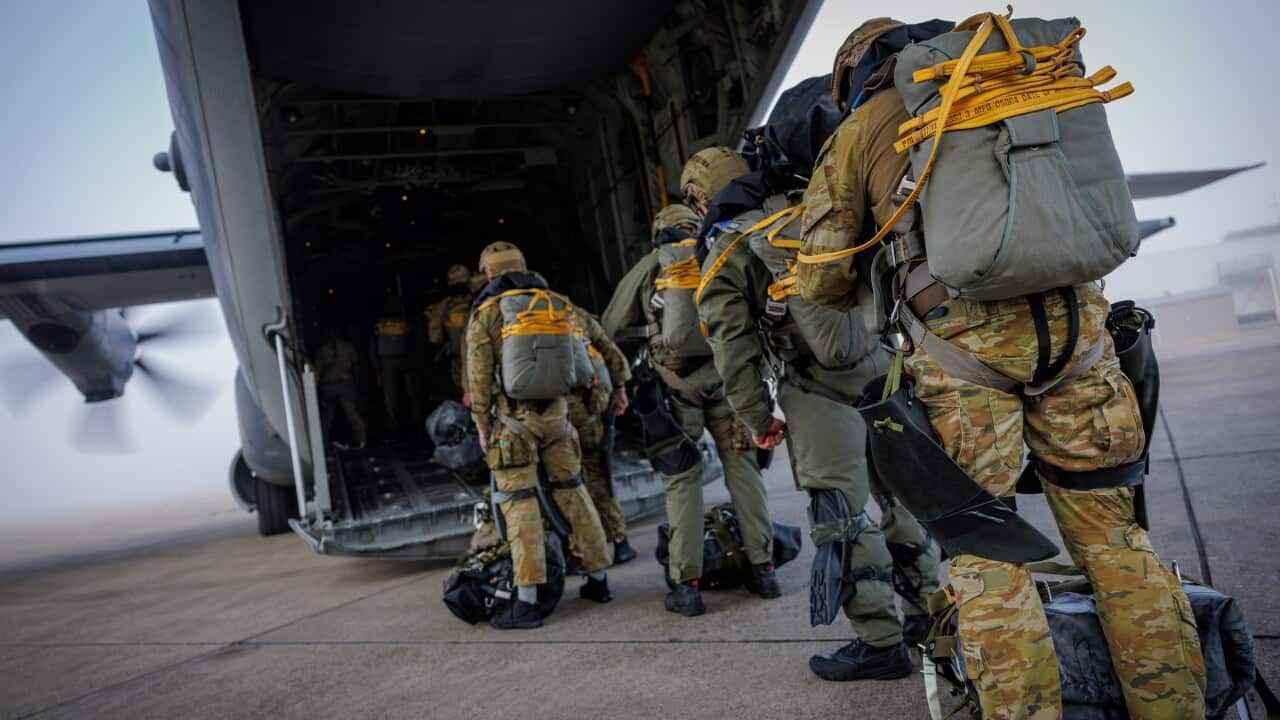The Coalition has unveiled plans to boost Australia's defence spending to 3 per cent of gross domestic product (GDP).
It says it will spend an extra, which would see expenditure increase to 2.5 per cent of GDP by 2029/30 — reaching an estimated $87.5 billion. Over the next decade it will boost this even further.
In contrast, according to the March federal budget, Labor's spending is estimated to be $79.1 billion by 2029-30, making up 2.26 per cent of GDP.
Australia's current defence spending is roughly 2 per cent of GDP — or $56 billion — in 2024-25.
Labor plans to grow this to 2.35 per cent — or a projected $100 billion by 2034 — .
The Coalition says it will grow spending more quickly. It plans to reach 2.5 per cent by 2029/30, reaching 3 per cent by 2034-35.

How much is 3 per cent of GDP?
GDP, which measures the value of goods and services produced within a country's borders, can change every year, but the March budget predicted Australia's GDP would grow to $4.5 trillion in the next decade.
Based on these estimates, the Coalition would spend roughly $135 billion on defence by 2034-35. Its spending is estimated to be $30 billion more than Labor's in that financial year, according to the current trajectory.
Experts warn against using GDP as a measure for predicting spending, given it goes up and down depending on whether the economy is moving through periods of growth or recession.
But the expected spending on defence would be slightly higher than the amount spent on health this year ($124 billion), and double the $54 billion the government spends on education.

Where will the additional funding go?
It remains unclear exactly where the extra defence spending will go.
Opposition leader Peter Dutton said drones, guided weapons, munitions and cyber capabilities are all on the Coalition's wish list.
"But we're not announcing procurement contracts from Opposition, which would be something we're not able to do without that advice. But they're the capabilities that we need to invest in," he told reporters in Perth on Wednesday.
What is certain, is that $3 billion will be spent on 28 extra fighter jets, increasing Australia's fleet of F-35s from 72 to 100.
However that leaves an additional $18 billion in spending over the next five years.
The Coalition could afford roughly another 125 guided multiple launch rocket systems — valued at $145 million each.
Or they could acquire three to four extra Virginia class submarines, costing $5 billion each, according to the Australian Naval Institute.
'We need to keep our country safe'
Dutton said keeping Australians safe was the "single most important task for the Australian government" as he made the announcement.
"It will be an important expenditure, because we need to keep our country safe, and if we're to preserve peace and stability in our region, if we're to be a good ally with our partners, then Australia needs to invest in defence," he said.
Jennifer Parker, defence expert at the ANU's National Security College, said an increase in funding is important amid growing global uncertainty.
"It's not just about preparing us for conflict, but a stronger defence force means the chances of conflict are less likely," she told SBS News.
US President Donald Trump has called for NATO members to lift their defence budgets to 3 per cent. When quizzed by reporters, Dutton refrained from stating this informed the Coalition's policy.

Defence Minister Richard Marles is critical of the Coalition's promised defence splurge, querying where the funding will come from. Source: AAP / Tertius Pickard
The Coalition hasn't revealed exactly how it will pay for the ongoing increase but pointed to $17.1 billion in savings over forward estimates from repealing Labor's tax cuts, if elected.
Additional reporting by Rania Yallop.
Visit the to access articles, podcasts and videos from SBS News, NITV and our teams covering more than 60 languages.


